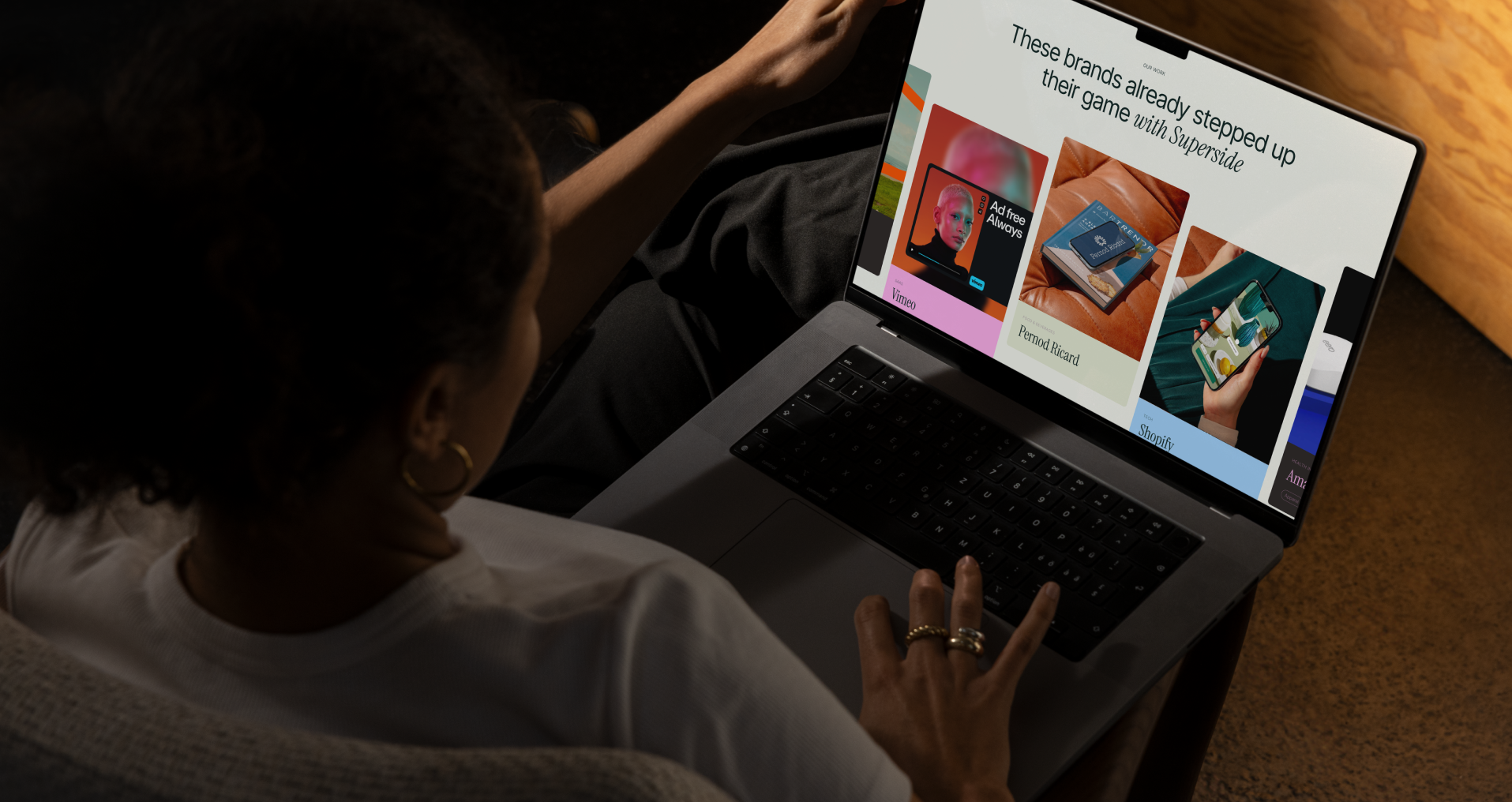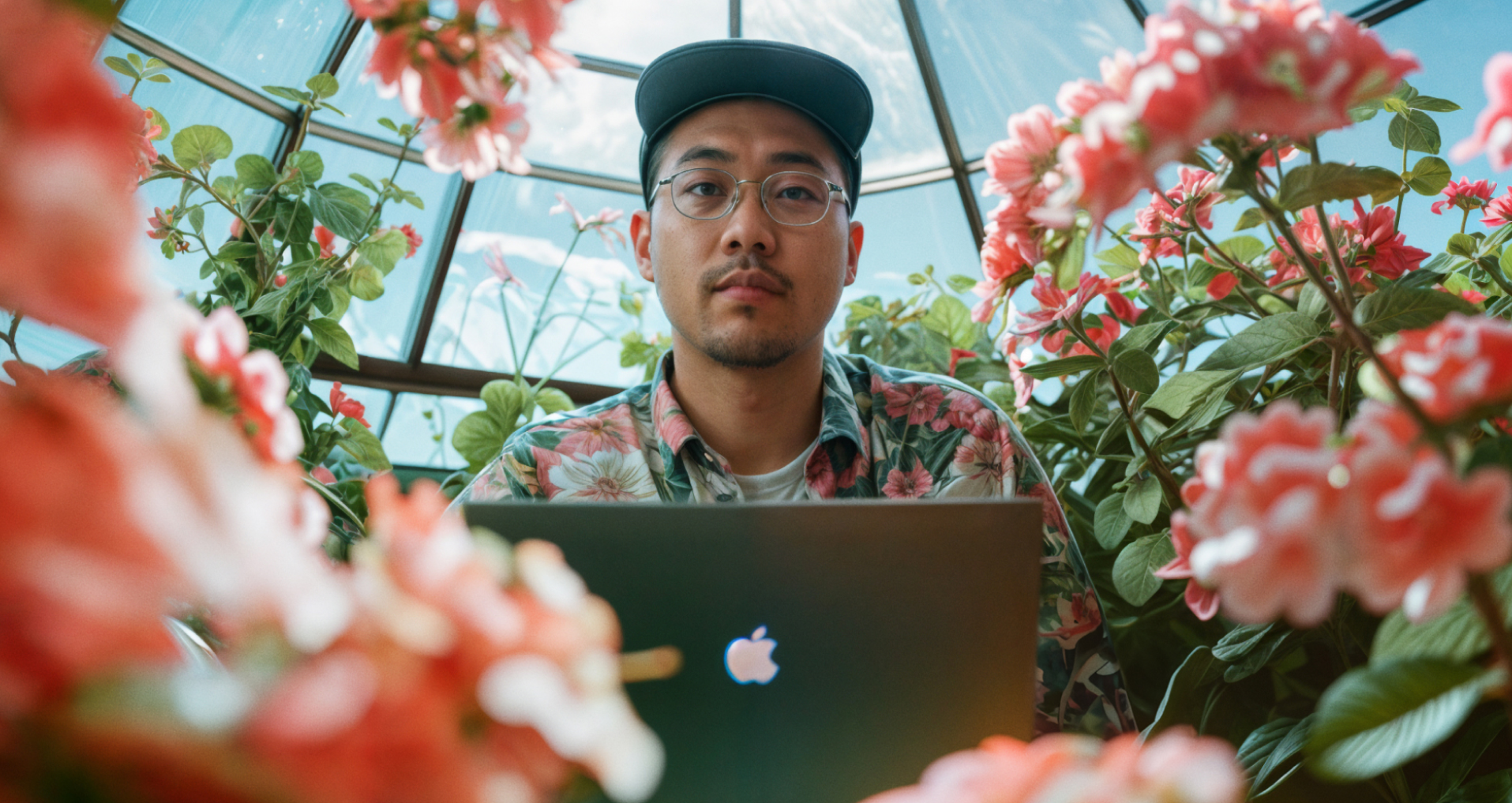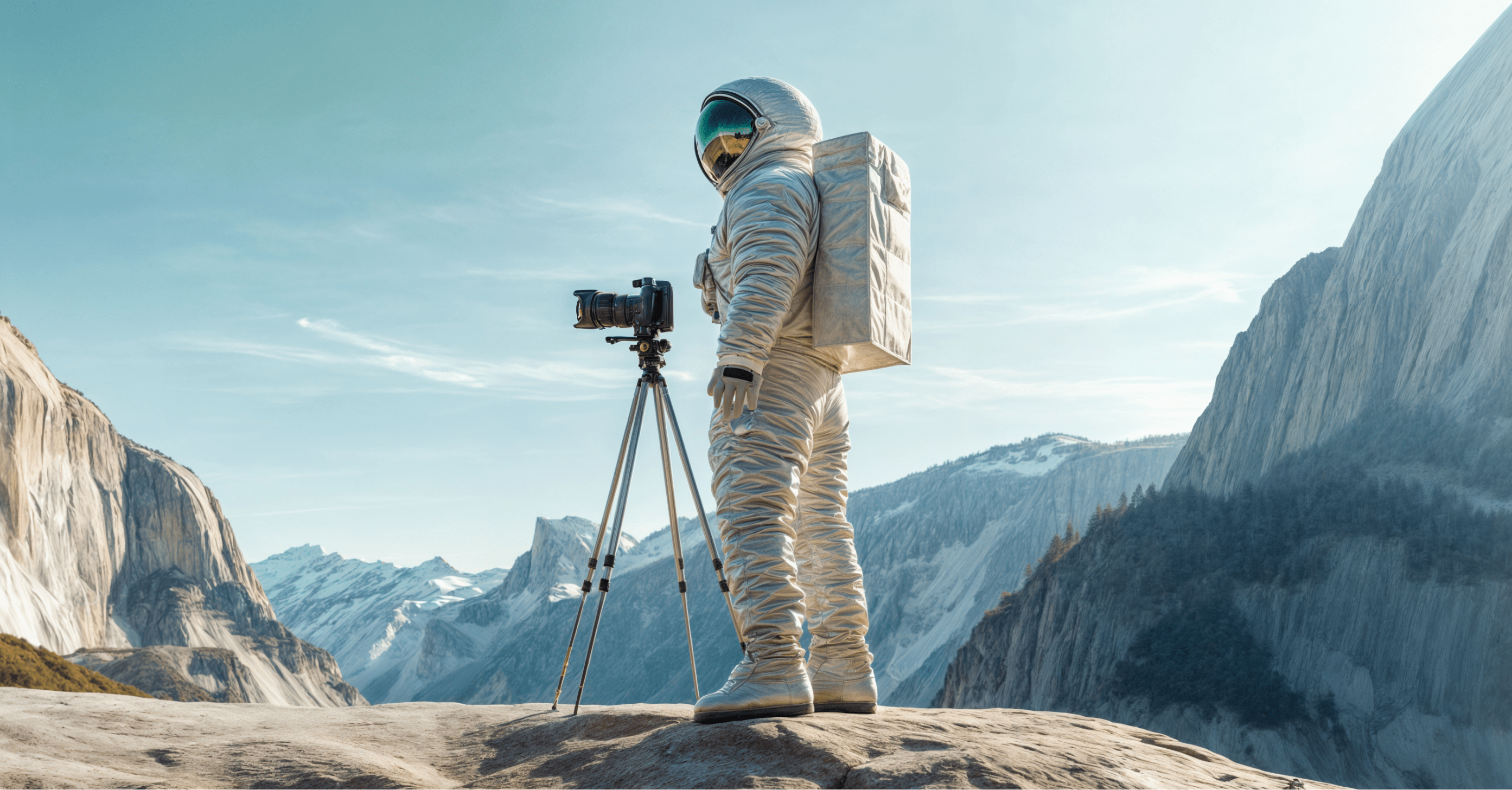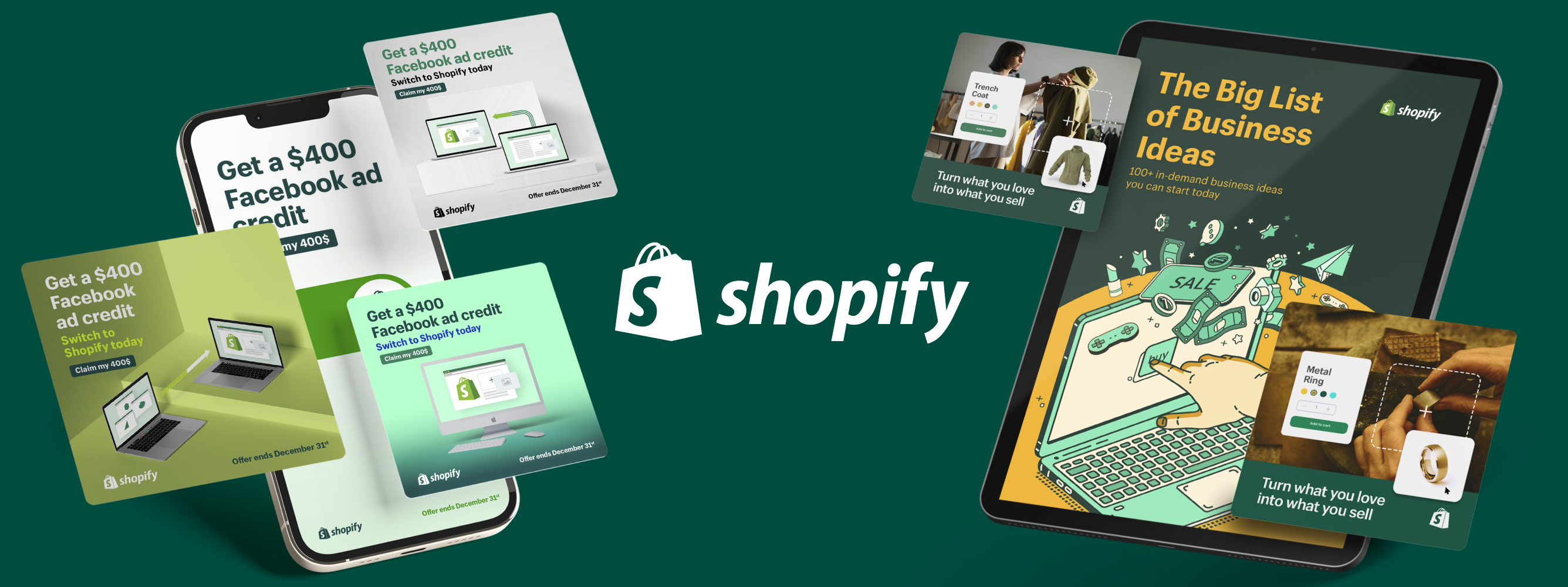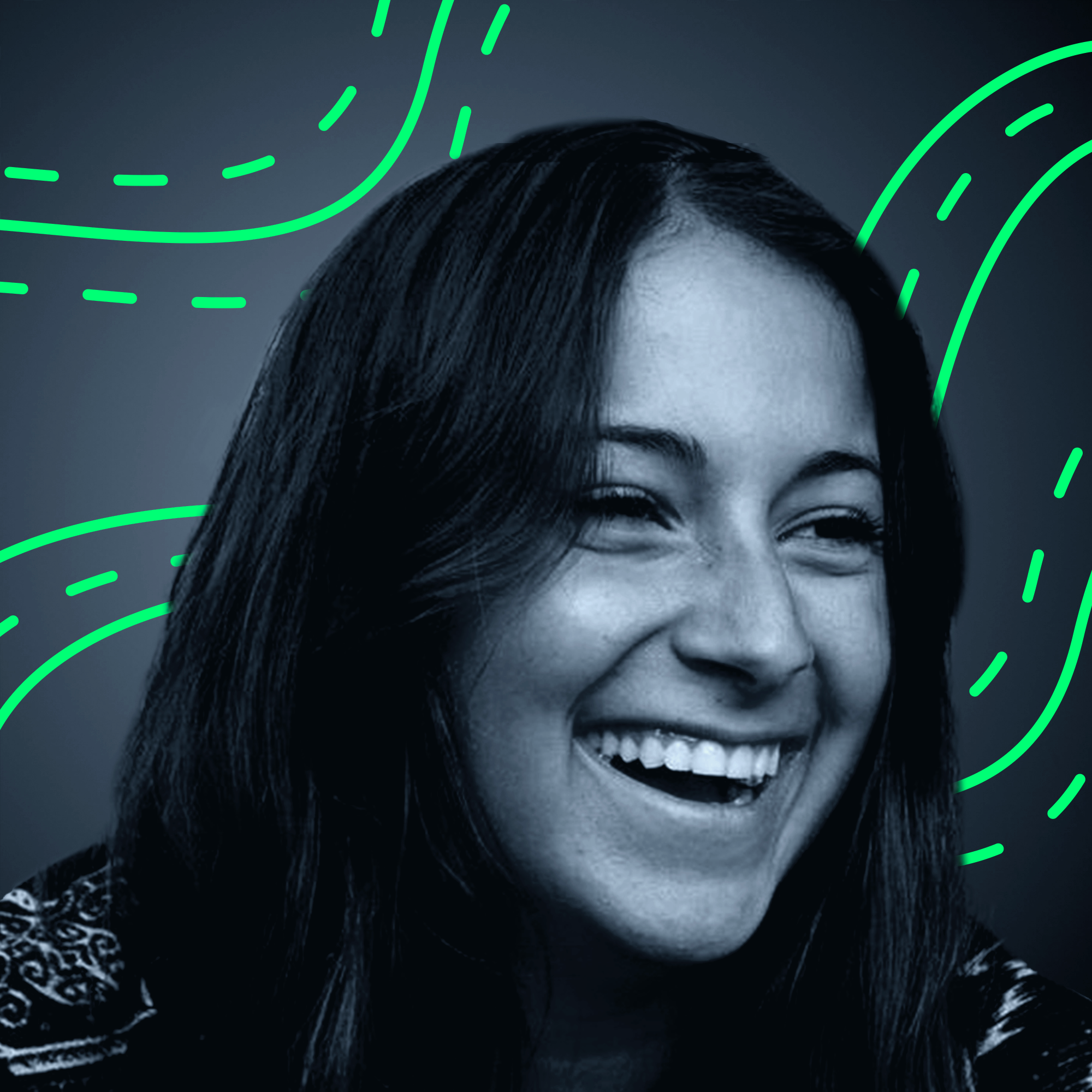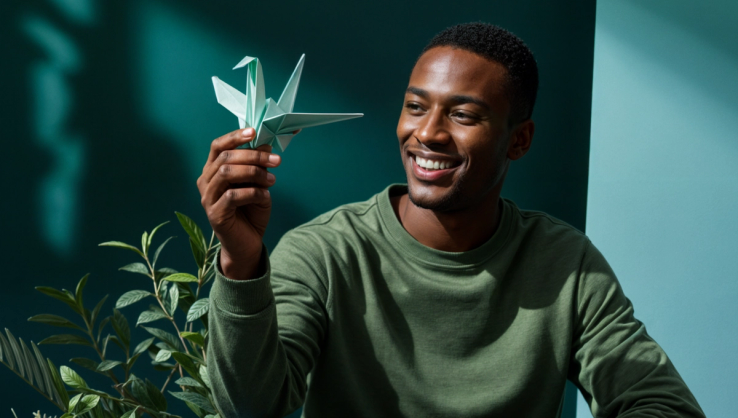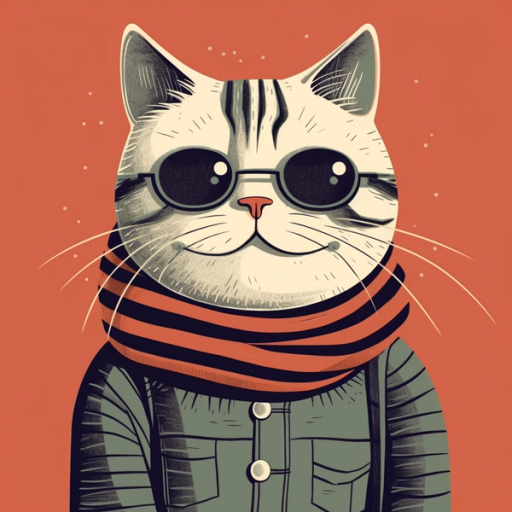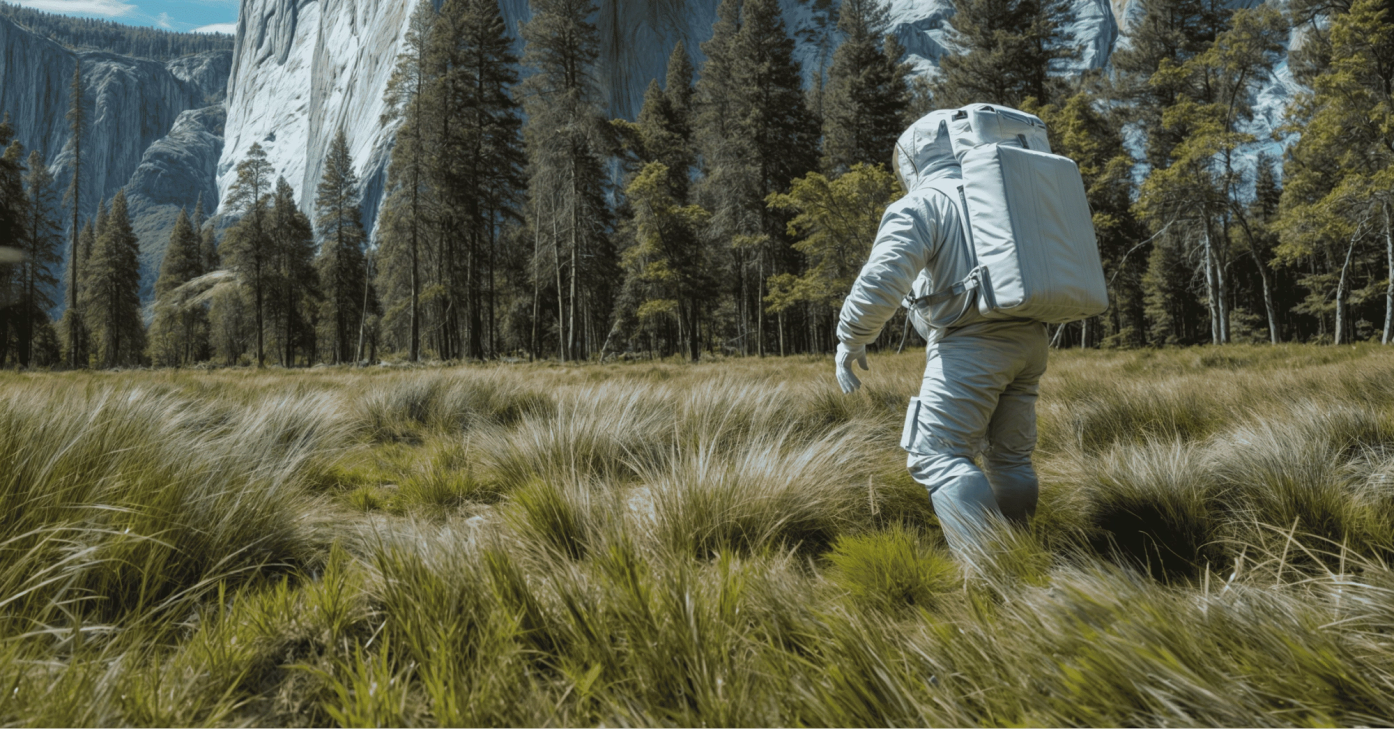5 Barriers to AI Adoption in Creative Teams (& Overcoming Them)

Don’t let barriers stop you from unlocking your creative team’s potential when it comes to adopting AI. Learn about the common barriers that creative teams face, like psychological and privacy barriers, and strategies to best overcome them.
Let’s transport ourselves back to 1752 when electricity was first discovered. This amazing new technology transformed the world. Today, it powers our electric cars, our fancy smart thermostats, and our portable electronic books (like Kobos).
But, these weren’t the first use cases of electricity. Uses of electricity started small and simple, and over time, we found more and more creative and complex solutions for them.
The same goes with AI. As more people use this technology—and as its influence grows—more industries are unlocking creative new ways to use it.
It’s important to remember that with every new piece of technology, there will always be apprehension. But, that shouldn’t hold us back from embracing it in a safe and responsible way.
So, let’s explore the barriers that creative teams face when it comes to adopting AI and actionable ways to overcome them.
We have teamed up with Tamara Dalhuijsen, Gen AI Program Manager at Superside, to get insights from professionals on how to overcome these barriers.
Understanding AI in Creative Processes
At Superside, we use AI across our creative work a lot. We’ve been able to go through trials and tribulations to see what the right moments are when it comes to bringing AI into our creative workflows. It also means that we’ve been able to experience and overcome a lot of barriers that many creative teams face today.
In fact, we at Superside recently polled 149 professionals on their thoughts on where AI can have the most positive impact, healthcare being #1:
On the other side of the spectrum, we’ve also seen apprehension towards using AI in many fields, including creative services. Some of these fears include:
- Quality of designs
- Originality
- Privacy
- Apprehension towards change
- Copyright infringement
That’s why we feel strongly about acknowledging the benefits that AI can have across graphic design and creative processes before we get into the similar bumps you’re likely to face along the way.
The bright side: AI Can and will help you move faster
At Superside, we offer AI-enabled creative services. That means that we’re able to deliver more for our clients in less time (and for less money too). When working with IPG, the Superside team was able to leverage Midjourney and Adobe Photoshop’s AI tools to:
- Cut design time by 90%
- Save IPG approximately $15-$20k
- Generate over 750 unique images for their marketing campaigns
While those numbers feel drastic, it’s important that this wasn’t a matter of overnight success. After all, AI isn’t a silver bullet. Getting our creative team to this point of success happened after understanding and going through many barriers, learning how to adjust and overcome them, and coming out on the other end.
AI adoption isn't a switch you can just flip.
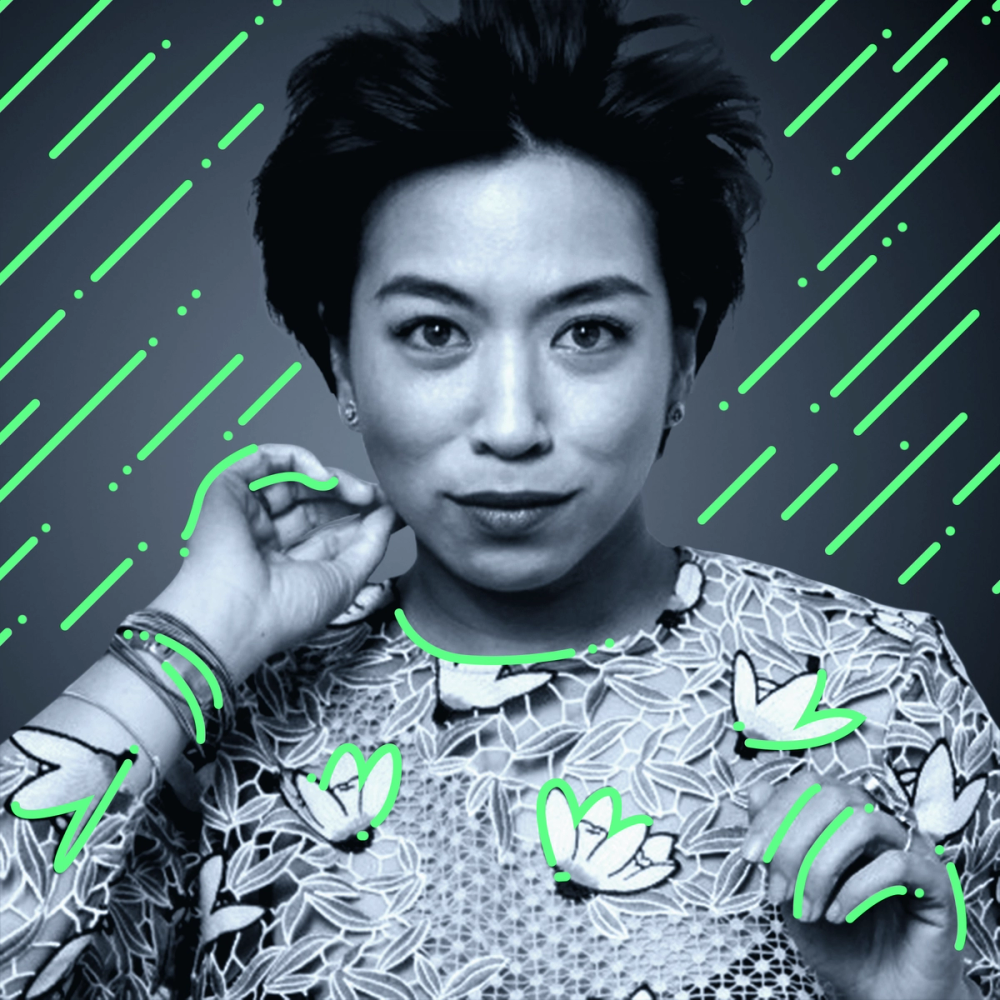
So, as your creative team starts the process of adopting generative AI, remember to give yourself grace. Don’t give up if you feel stuck. Learn from others, just like we did, and overcome barriers as they come up. Trust us, it’s worth it.
5 Common Barriers to AI Adoption in Creative Teams
A report by McKinsey found that generative AI could add the equivalent of $2.6 trillion to $4.4 trillion in economic benefits to the market annually. So, when it comes to using AI for work, you need to embrace it so you don’t get left behind.
1. Psychological barriers
AI can feel like a big and scary change for a number of reasons.
On one end, it can be hard to change the way you’ve worked for five, 10, or even 25 years. You’ve developed a process that’s tried and tested. It feels like second nature to you. And change can feel hard for most people.
Bringing AI into your creative process likely won’t come without any mental blocks because you need to learn how to approach your workflows in an entirely new way. Not to mention, there’ll be a lot of trial and error around how to best use AI for your work.
Throughout our extensive experience of completing nearly 800 AI-driven projects, one thing remains clear: human intervention is indispensable. Each project has highlighted the critical role of the human touch. It's essential to view AI as a powerful tool rather than a threat. AI isn't here to replace your job; instead, it's those who harness the power of AI who will thrive.

Another common psychological barrier is the fear of AI replacing humans. Taking your jobs. In fact, we asked 219 people what concerned them most about the rapid advancement of AI and 32% of them shared that job displacement was their top concern.
While these are completely normal barriers to have when adopting AI, there are great ways to reduce these barriers for yourself and your team. The best way? Create a safe space for yourself and other creatives.
When asked about how to introduce AI to your team, Anne Milan Alo shared:
Creating a space for psychological safety is key and really important.

This can be as simple as reassuring your team how you’re planning to use AI and what you intend it to replace—like repetitive tasks.
Incorporating AI into my workflows has accelerated my skill development, enabling me to make more informed decisions and advancing my career through continuous micro-learning. Embrace AI to your advantage, and you'll be amazed at how it can propel your career growth!

2. Lack of technical AI expertise
Many people are worried about their skills gaps when it comes to understanding how to use AI tools. And if you’re in the bucket, who can blame you? AI comes with a whole new vocabulary to learn—GPT, neural networks, prompt engineering, deep learning and tokens. It feels like you’ve entered a new realm of jargon that you now have to understand.
Honestly, the best way we've learned the technical skills we need for using AI—both myself and the entire AI team—is through trial and error. With tools advancing at such a rapid rate, continuous exploration is essential to stay updated with the latest trends.

Beyond the scary thoughts around our own technical expertise, the lack of knowledge has also proven to be a top-down barrier for teams eager to adopt AI. In IBM’s Global AI Adoption Index, it was reported that the most cited barrier to adoption across executives was limited AI skills and expertise.
Source: IBM
Having a solid understanding of AI will help you use it responsibly and avoid situations like:
- Feeding proprietary company data into AI tools that use it to train their large language models, making private company information available to the public.
- Using AI without mitigating the risks of hallucinations or bias in generated content.
- Running the risk of a lawsuit from copyright infringement.
The beauty of AI lies in its versatility; it can be tailored to meet your specific needs. What works for me might work differently for you. Adapt AI to your working style, not the other way around.

3. Difficulty in integrating AI with existing workflows and systems
This barrier can manifest in a few different ways depending on your team structure or the state of your company. Some common factors that we’ve seen come up when creative teams look to integrate AI within their own workflows and systems include:
- Resource constraints: Do you have the time, space, and budget to allow your team to move a little slower so that you can ultimately move faster?
- Organizational barriers: Does your organization have strict policies against using AI? Does your business have a very extensive and drawn-out procurement process?
- Lack of leadership support: Is your leadership team or direct manager apprehensive about using AI?
While some of these barriers may feel impossible to change, like updating your company’s procurement process, there are still some things that are completely in your control.
For example, when we make leadership decisions, a lot of these decisions are based on data and revenue gains.
Show up to those conversations with clearly defined objectives and outcomes to help define success in language that your executive team understands. This is a great way to instill curiosity across your leadership team and show them just what’s possible if you bring AI into your creative process.
Give your leadership team a reason to be open-minded and forward-thinking. As Adam Colyer mentions, there's one thing we can't forget when trying to adopt AI efficiently:
You’re going from 85 horsepower to 185 horsepower.

4. Ethical and privacy concerns
When it comes to AI, one of the biggest questions within the realm of design is… Is this ethical? Are we stealing or copying someone else’s art?
And those are fair questions to pose. After all, you want to keep your reputation and that of your company squeaky clean. You want to rest easy at night with a clear conscience.
The hard truth: regardless of how much work the teams behind the most popular and sophisticated Large Language Models (LLMs) put in, these concerns will always exist in some shape or form. In part because the data that feeds these LLMs is inherently biased, so the predictions they make are biased too.
In a recent episode of "Leading Learning" titled "AI Adoption: Barriers and Accelerators," Jeff Cobb, Co-founder of Tagoras, says the following:
This is the kind of thing that’s always making headlines around AI. The data used to train these large language models has the chance to perpetuate stereotypes.
A recent Salesforce study urges teams to put the right guardrails in place when bringing AI into the workplace to reduce the risk of ethical and privacy concerns.
Source: Salesforce
5. Creative barriers
Similar to the sentiment around remote work, a lot of creatives believe that AI will lead to isolation. In fact, the Superside team recently polled 76 people about the role they believe AI will play when it comes to human interaction. 55% believed that it would lead to isolation over increasing connectivity.
It’s not an unreasonable fear. Rather than spend time brainstorming with humans, you’re going back and forth with a computer. But, it doesn’t have to be a one-for-one switch. Instead, I believe that it opens up better opportunities to engage with other creatives.
In my experience, AI lacks critical thinking, especially when it comes to adhering to strict brand guidelines or hyper-specific briefs. However, it has proven to be an excellent ideation tool, helping our creative teams gather various ideas into visual examples for our clients.

Rather than staring at a blank page together, you can review and build off of a larger mood board to help you decide the best direction to move forward with, faster.
AI isn’t meant to replace human interaction, but it will change the moments in the creative process in which we do interact with one another. Just like remote work has pushed distributed teams to find more moments to interact, whether it’s quarterly get-togethers, coffee chat programs, or less asynchronous work (in some scenarios).
We at Superside use AI in parts of our projects, such as illustration generation to understand the assets and compositions, and our creative team then manually redraws the illustrations, incorporating approved components from the AI-generated examples. By combining AI with traditional design, we achieve the best results, maximizing both creativity and efficiency.

It’s important to share that it’s also not all doom and gloom. We asked 126 people about the impact they believed AI would have on creativity and artistic expression. 63% of people believed that it would actually enhance creativity (and we agree!).
3 Strategies to Overcome AI Adoption Barriers
Just because barriers exist, doesn’t mean we can’t break through them.
Let’s walk through three strategies to help you and your team overcome common challenges when adopting AI.
1. Training and education
To quote Peter Parker’s uncle, Ben, "With great power comes great responsibility.”
The same thing applies to AI. Having a deep understanding of how AI technology works and how to best use it is not only great for productivity gains, but it’s the responsible thing to do.
Finding your way to work with AI is the key to success, as every designer has a unique approach and different uses for it. Some use AI for ideation and exploration, others for foundational design to build upon, and some for strategy and research. Integrating AI into the more tedious or repetitive parts of your process can help speed things up, allowing you to focus on what you do best.

That’s why it’s so important for any creative team to consistently prioritize continuous learning and upskilling when it comes to AI, especially considering how fast this technology changes. Just like you would want to keep up with design trends, the same should go with AI. Here are a few ideas on ways to keep up with the latest developments in AI:
- Attending design conferences or panels that dive into AI (such as our recent summit, The Infinite Canvas)
- AI publications and blogs, especially from the products you’re directly using (I.e. Superside’s AI content or Midjourney)
- Networking with other creative professionals who use AI in their own workflows
AI doesn’t replace humans, it empowers them
At the end of the day, AI is meant to be a performance enhancer. Beyond igniting our creative spark and reducing mental blocks, it can help us execute at a faster rate.
What it can’t do is pull from our lived experiences to produce concepts that, at their core, are human-centric.
Ultimately, the best recipe for success is to bring the strengths of both humans and AI together. We’re not even being philosophical about that either.
In May this year, Superside hit a major milestone of delivering 500+ AI-enhanced projects that saved our customers a total of $1.4M in design costs.
Beyond the cost savings, it’s important to also acknowledge that the dollars saved didn’t come at the expense of quality. By educating our creative workforce, and combining the humanity of people with the scale AI brings, we’ve been able to deliver exceptional designs at a faster rate without sacrificing quality.
2. Addressing ethical, creative and privacy concerns
We’ve covered why ethics and privacy are common barriers for creative teams looking to adopt AI. So it’s only fair that we talk about how to address and overcome this major barrier.
AI should handle the tasks you find less engaging, giving you more time to refine, design and add your personal touch to the final product. Embrace AI to enhance your workflow, and you'll see your creativity and skills reach new heights.

Rather than look at these barriers as deterrents, we should use them as the fuel we need to put the right guardrails in place whether it’s within your direct team or across the org.
While this isn’t an extensive list, it’s a great start. Some guardrails you should consider to tackle ethical and privacy concerns when adopting AI include:
- Establishing what we can and can’t use AI for: We’re not putting the company and its proprietary data at risk. Part of determining what we can use AI for is what we’re open to feeding into it (I.e. never put customer data or call transcripts through AI). This is where a great internal AI policy can come into play.
- Determining what level of encryption is needed to keep company data safe: Of course, this will depend on your company size and the privacy needed for not only your data, but customers as well. For example, if your customers rely on you having SOC 2 compliance, you’ll need to figure out what encryption and privacy measures need to be put in place to ensure that you’re able to keep that designation.
- Implementing a process around how we’ll review generated content to avoid harm and bias: What steps are necessary to reduce the risk of churning out biased content? How can we ensure that there’s diversity across the things we generate?
At the end of the day, bringing new technology into the workplace is bound to come with a lot of trial and error. As you start to implement AI across your company, it’s important to review how this technology is being used on a frequent basis to ensure that you’re tackling problems before they become detrimental to your business.
How Superside and SmartNews overcame creative concerns around AI
When approaching Superside, SmartNews was determined to elevate its digital banners by incorporating visuals for various sports that went beyond using stock images.
SmartNews wanted to build a large visual library of captivating images to better engage their audience, but they didn’t want to use stock images.
Working with Superside, they were able to leverage the AI powers of Midjourney and Adobe Photoshop, and pair them with talented graphic designers to spin up 150+ unique image options in just 4 hours.
With AI, we were able to spin up unique and dynamic images that fit the brief. With human intervention, we were able to give AI the proper design direction to generate at scale. We were also able to intervene post-generation to update and retouch intricate details of each image.
3. Keeping track of the evolution of AI
Just as you stay on top of the newest changes in design, the same should be done with how AI evolves. Especially as we see more complex and successful implementations of AI across so many industries—staying on top of the evolution will ensure you’re able to stay ahead of the game.
To keep up with the rapid evolution of AI, I follow leaders in the industry and absorb their knowledge and expertise, which saves me a lot of time and helps me quickly and efficiently learn about new trends and tools. It's also important to keep an eye on versatile tools since software can get expensive, and testing multiple tools can be costly.

A recent report from MIT’s Management School found that 92% of large companies are achieving returns on their investments in artificial intelligence. The same percentage is even increasing the investments they’re throwing into AI.
Putting in the effort to overcome these barriers is almost always worth the time and money you put into it. By moving slower—taking the time to learn and educate your company and build policies—you’re empowering your company to move faster.
Platforms like YouTube, Discord communities, and LinkedIn pages offer a wealth of free learning materials. Creating a community group among your colleagues to share industry news is also beneficial.

We saw it first-hand when working with Unigloves. Superside was able to support Uniglove in accelerating its time-to-market with AI-driven imagery, cutting design time by 57%. That’s a substantial amount of time saved.
Successfully Infusing AI into Creative Processes is An Art and a Science
So many businesses adopt AI because it’s been proven to be a successful technology for:
- Reducing human error
- Automating repetitive tasks
- Making people and processes more efficient
But, don’t take our word for it. We recently asked 185 people, “What do you think are the biggest benefits of AI?”
The majority (80%) of respondents cited increasing efficiency in tasks as the biggest benefit. It’s beneficial to incorporate AI into your business and it’s become popular opinion.
At Superside, we’ve proven to ourselves and our customers that, when implemented successfully, AI can drastically reduce design costs and time. From the purpose-built AI design tools to fine-tuning our own workflows to account for AI, we’ve been able to skyrocket output without sacrificing quality.
And, in case we haven’t addressed all of your concerns today, you can explore our answers to your questions about AI that you might otherwise be reluctant to ask.
Breaking Barriers to AI Adoption With Superside's Human-Powered Creative AI
Don’t let a little hurdle stop you from unlocking your creative potential. There’s so much AI can do to help your creative teams scale design without sacrificing on quality or limiting the unique and valuable creative juices your people bring to the table.
If you’re looking for a partner-in-scale, Superside is ready to work alongside your team to help you overcome the AI adoption barriers that many in the creative industry face.
Hiba Amin is a Contributing Writer at Superside. As a marketing leader who lives and breathes content, she's had the privilege of heading up content teams and has also been in the trenches as a marketing team of one. She's worked at a wide range of tech companies across PLG, SaaS and most recently, AI. Say hi to her on LinkedIn (and ask her about her dog, Milo!).
You may also like these

The Creative Struggle for Meaning in the Age of AI Adoption
Imagine being a painter in the 1840s, with people traveling for weeks to be immortalized by your delicate brushwork. As you finish your latest masterpiece, adding final details, a commotion catches your attention.Outside, people marvel at a new invention—a sturdy black box that captures reality in minutes, with more detail than any painting could achieve. You feel a shiver down your spine. If just pressing a button can do what you can, what are you here for?AI adoption has come to disrupt not only every industry, from medicine to finance to marketing, but also our daily lives. Large Language Models (LLMs) began as thought partners, capable of generating text in any language, tone or style, offering fresh ideas, planning support or even challenging your thinking. Then, other types of Gen AI like image generation, voice, music and video enhancement and other tools, emerged. What used to take long hours or days (maybe months) and specific skills, is now achievable by knowing how to prompt effectively and trial and error.Our AI Consulting Team surveyed over 800 creatives from 80 different companies and more than 10 countries. We listened to their thoughts and concerns on this new wave. By now, we have a much clearer understanding of how they think and feel about their work, and the changes AI is introducing into their workflows and their lives. Here are some of the results.
Beyond the Brief: All the Buzz About AI-Powered Ads
Global agricultural technology leader, Syngenta uses science to advance crop production. However, even the most cutting-edge innovations must work in harmony with nature. Attracting pollinators, like bees and butterflies, Operation Pollinator helps boost crop yields.But what does this have to do with using AI for ad creative? When guided by human ingenuity and expertise, AI is a catalyst that lets you quickly explore and refine ideas.Learn how partnering with Superside helped Sygenta speed concepting and nurture the storytelling of these groundbreaking ads.The Brief: Promoting Operation Pollinator To kick off the project, Syngenta shared an existing Operation Pollinator explainer video. There were no static images for this initiative, which meant the creative team was starting from scratch. Vidrio and Montelongo had a blank slate, a lot of freedom and only two days to complete the entire project.
Responsible AI: What Enterprise Brands Need To Know
Responsible AI isn’t just about what is legally allowed, it also speaks to the core of your brand identity, leading you to ask: What’s important to you as a brand? What are the things that make your brand truly unique?To empower you to take fundamental actions to ensure an effective approach to AI adoption that aligns with your brand’s core values, I'll take you through a high-level overview of why responsible AI is important, explain how to make crucial decisions and share examples from brands that have tackled these same questions.For many of our enterprise customers, the impact of using generative AI to produce marketing and advertising creative extends far beyond productivity gains—it helps your brand to stand out in a crowded marketplace, lets you iterate faster than your competitors and achieve your business targets.Whether you're an established leader or steadfast category disrupter, the way you roll out any initiative defines you. AI integration is no different, which is where the concept of practicing responsible AI comes in.Practicing Responsible AI: Purposeful Actions for Enterprise Brands
